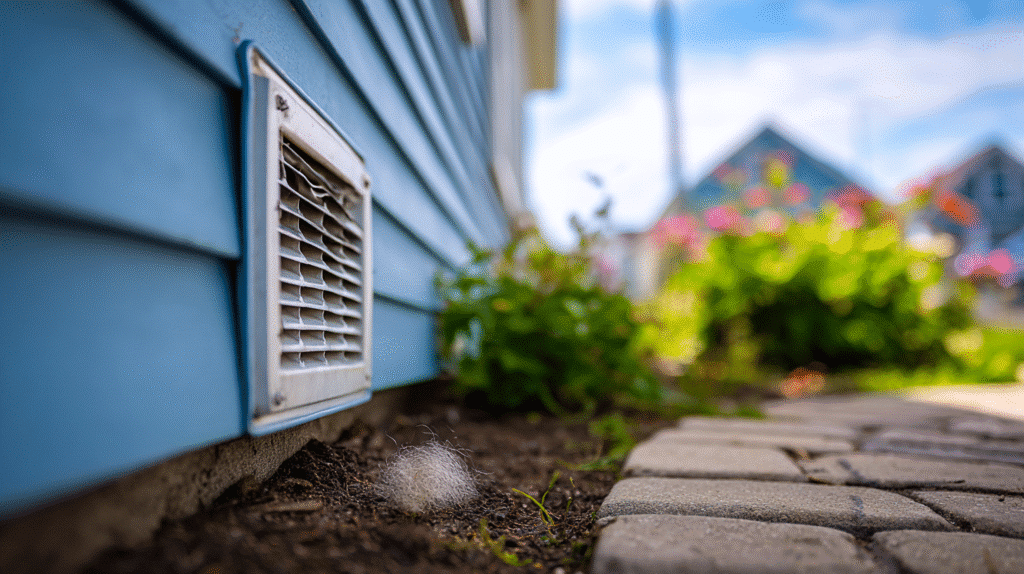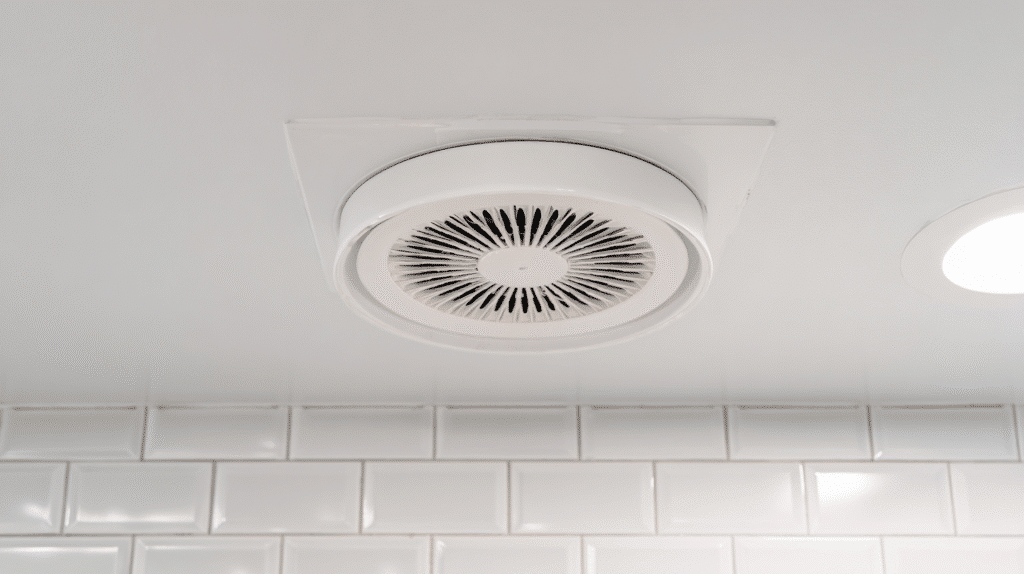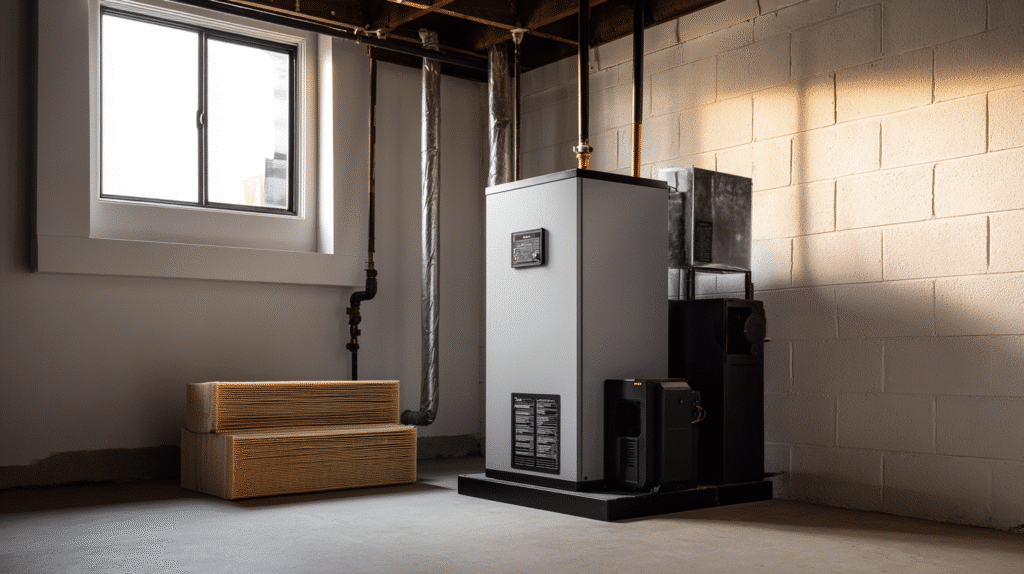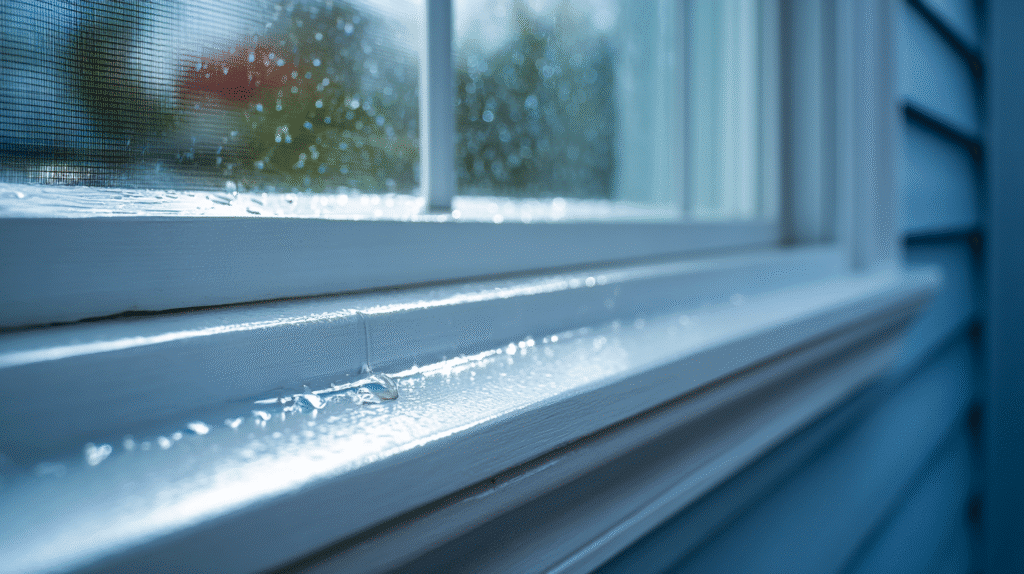You are busy. Small home chores slip. Leaks grow. Dust builds. Bills rise. This guide fixes that. It lists 20 commonly forgotten home maintenance tasks and shows quick steps you can do today. It also gives a simple schedule, costs, and signs to watch for. With this, Forgotten Home Maintenance turns into a fast, calm routine.
Why these chores get missed
Life is full. Many jobs hide from sight. Coils sit behind covers. Filters sit in basements. We only notice when things break. That is costly. A little care, on a set cycle, prevents most issues. It also keeps air clean, lowers energy use, and protects safety.
Forgotten Home Maintenance: the complete list
Below are the 20 commonly forgotten home maintenance tasks. Each item explains why it matters, when to do it, and how.

1) Clean refrigerator coils
Why: Dust on coils makes the fridge run hot and long. That wastes power and shortens life.
When: Every 6 months.
How: Unplug. Pull off the kick plate or rear panel. Vacuum with a brush. If safe, blow from back to front using a small air compressor. Wipe the floor and re-install.
2) Dust ceiling fan blades
Why: Dust throws the fan off balance and moves dirt into the room.
When: Every 2–3 months in use.
How: Slide a pillowcase over each blade to trap dust. Wipe the housing. Check the direction switch. Summer is counter-clockwise for the breeze. Winter is clockwise to push warm air down.
3) Drain water heater sediment
Why: Sand, scale, and rust settle in the tank. Heat must push through this layer, which wastes energy and can cause early failure.
When: Annually.
How: Follow your brand steps. Usually you turn off heat, close the cold inlet, connect a hose to the drain, open a nearby hot tap, then open the drain until clear water flows. Relight or power on when full.
4) Replace water filters
Why: Dirty filters restrict flow and may grow bacteria.
When: Follow the label. Many whole-house cartridges need 3–6 months. Fridge filters often need 6 months.
How: Shut off water, release pressure, swap the cartridge, and flush per the manual until water runs clear.

5) Deep clean the dryer and vent
Why: Lint is flammable. A blocked vent also cooks the dryer.
When: Lint trap after every load. Duct and wall cap every 6 months.
How: Vacuum the lint slot with a narrow tool. Pull the dryer. Detach the duct. Brush or blow the full run to the exterior. Clean the wall cap so the damper swings free.

6) Service bathroom exhaust fans
Why: Dust chokes the motor and reduces airflow, which leaves moisture and grows mold.
When: Every 6 months.
How: Turn off power. Pop off the grille. Vacuum and wipe the fan and housing. Wash the grille. Confirm the duct to the outside is clear. Use a timer switch so fans do not run for hours.
7) Defrost chest or upright freezers
Why: Frost thickens over time and kills efficiency.
When: When frost is over 1/4 inch or at least yearly.
How: Move food to a cooler. Unplug. Lay towels to catch water. Let ice melt. Never chip with sharp tools. Wipe dry and restart.
8) Add fuel stabilizer for seasonal engines
Why: Old fuel gums carburetors.
When: Before winter storage.
How: Add stabilizer to fresh fuel. Run the engine a few minutes so treated fuel reaches the carb. Store per the manual.

9) Clear gutters and, yes, the downspouts
Why: Leaves and grit trap water. Water then finds wood and causes rot or ice dams.
When: Spring and fall, plus after big storms.
How: Scoop gutters. Flush with a hose. Feed a hose or a cleaning wand down the spout. Confirm long extensions move water at least several feet away from the foundation.
10) Extend downspouts and grade soil
Why: Water near the house invites seepage, mold, and frost heave.
When: Inspect each rain season.
How: Add 4–6 ft extensions. Regrade low spots so soil slopes away. Check sump pump discharge if you have one.

11) Inspect and sweep chimneys or wood-stove flues
Why: Creosote can ignite inside the flue. That is a severe fire risk.
When: Annually before burn season.
How: Hire a certified sweep. Ask for a level-1 inspection and a written report.
12) Clean faucet aerators and shower screens
Why: Sediment reduces flow and causes odd spray patterns.
When: Every 6 months.
How: Unscrew the aerator. Soak parts in warm vinegar. Rinse. Reassemble in the same order.

13) Lubricate garage door rollers, hinges, and springs
Why: Dry hardware strains the opener and can fail.
When: Twice a year.
How: Use silicone spray or white lithium grease on rollers and hinges. Do not adjust torsion springs yourself. Test safety reverse monthly.
14) Test smoke and CO alarms
Why: These save lives.
When: Test monthly. Replace batteries yearly if replaceable. Replace whole units per label, often at 7–10 years.
How: Press test buttons. Vacuum vents. Note the date on each unit.

15) Check and replace HVAC filters
Why: Clogged filters force the blower to work harder and spread dust.
When: Look monthly. Replace as needed, often every 1–3 months.
How: Turn system off. Slide out the filter. Match the size and airflow arrow. Install the new filter snug.
16) Wash trash and recycling carts
Why: Bacteria and odor grow fast.
When: Monthly in warm months.
How: Rinse. Scrub with dish soap. Sprinkle baking soda to control odor. Let dry in the sun if you can.
17) Walk the roof from the ground
Why: Small holes lead to big leaks.
When: Each season and after storms.
How: Scan with binoculars. Look for missing shingles, nail pops, or flashing gaps. Check the attic for stains after heavy rain.

18) Wash, brighten, and seal decks
Why: Sun and water break down wood fibers.
When: Every 1–2 years.
How: Sweep. Use a deck cleaner or oxygen bleach. Rinse. Let it dry. Brush on a quality sealer or stain per the label.

19) Clear window and door weep holes
Why: These tiny drains carry water back outside. If blocked, sills hold water and rot.
When: Spring and fall.
How: Use a cotton swab or plastic pick. Flush with a squeeze bottle. Confirm flow to the exterior.
20) Label main shutoffs and test GFCI/AFCI
Why: In a leak or fault, fast action prevents major damage.
When: Twice a year.
How: Find the main water, gas, and electrical shutoffs. Tag them. Press the “test” and “reset” on GFCI outlets. Trip and reset breakers with AFCI test buttons if equipped.
How these jobs save money and stress
Small tasks block big failures. Clean coils and filters cut run time, so equipment lasts longer. Dry, clear vents lower fire risk. Clear drains move water away, so basements stay dry. Also, steady care keeps warranties valid and helps when you sell, because you can show records. According to federal energy guides, proper filter changes, water heater care, and good ventilation habits improve efficiency and comfort and can reduce utility costs over time (see sources).
Tools you need for a fast routine
You do not need a truck load of gear. Keep a small tote with: a tape measure, a headlamp, safety glasses, glove pair, screwdriver set, nut driver, pliers, a stiff brush, cotton swabs, white lithium grease, silicone spray, vinegar, baking soda, shop rags, a small wet/dry vacuum, a compact leaf blower, and a basic ladder. Keep extra HVAC filters labeled by size. Store spare AA or 9-volt batteries for alarms.
Set a simple schedule that works
The secret is cadence. Use short, repeat cycles. Put them on your phone calendar.
Monthly:
- Check the HVAC filter.
- Test smoke and CO alarms.
- Rinse trash carts.
- Scan roof from ground after storms.
- Quick bathroom fan dust check.
Every 3 months:
- Vacuum fridge coils if you have pets or a dusty shop.
- Vacuum dryer lint well and check the wall cap.
- Check downspout extensions and yard slope.
- Wipe window tracks and weep holes.
Every 6 months:
- Clean bathroom fans fully.
- Clean faucet aerators and shower screens.
- Inspect garage door hardware and lube moving parts.
- Review shutoff labels and GFCI/AFCI function.
Yearly:
- Drain water heater sediment.
- Deep clean dryer duct.
- Defrost freezers as needed.
- Sweep chimney or schedule pro service.
- Wash and seal deck.
- Full gutter and downspout service.
Cost, time, and payoff table
Use this quick map to plan a weekend.
| Task | Time | Typical Cost | Why it helps |
| Refrigerator coil clean | 15–30 min | $0–$10 | Cuts run time and heat load |
| Dryer duct clean | 30–60 min | $0–$25 | Reduces fire risk, faster dry times |
| Bathroom fan service | 15–30 min | $0 | Moves steam out faster |
| Water heater drain | 30–45 min | $0–$10 | Removes sediment, better heat transfer |
| Gutter and downspouts | 1–2 hrs | $0–$40 | Stops wood rot and leaks |
| HVAC filter swap | 5–10 min | $6–$25 | Protects blower, better air |
| Garage door lube | 10–20 min | $5–$10 | Quieter door, less wear |
| Deck wash and seal | Half day | $30–$120 | Longer life outdoors |
| Chimney sweep (pro) | 1–2 hrs | $125–$250 | Lowers flue fire risk |
| Alarm tests and batteries | 10–20 min | $0–$10 | Life safety check |
Common mistakes and easy fixes
- Skipping downspouts. Gutters look clean, but the elbow is packed. Always flush to the ground.
- Running bathroom fans for hours. Use a 30–60 minute timer. It saves power and motor life.
- Over-tight deck washing. A narrow, harsh spray scars wood. Use wider fan tips and gentle cleaners.
- Wrong HVAC filter type. Too high a MERV can starve airflow in some systems. Start with the maker’s guidance.
- No records. Keep a simple note on your phone or a paper log. It takes one minute and helps you stay on track.
Safety notes you should not skip
Turn off power at the switch or breaker before opening any electrical device or fan. Unplug appliances before cleaning coils. Never reach into a moving mechanism. Take care on ladders. Do not climb on steep roofs. If you smell gas, leave at once and call your utility. For chimneys, gas lines, pressure tanks, or torsion springs, hire a pro.
Make the plan stick
Habits beat memory. Tie tasks to seasons. For example, do gutters with fall yard clean-up. Do water heater service the same weekend you change to winter driving tires. Add recurring reminders. Share the plan with your family so everyone owns a piece.
The 5-minute seasonal checklist
Use this quick list each season to keep Forgotten Home Maintenance off your mind.
Spring:
- Clear gutters and downspouts.
- Check sump pump discharge.
- Inspect roof and flashing.
- Clean and lube garage door.
- Test GFCI outlets.
Summer:
- Wash and seal deck if due.
- Clean fridge coils and freezer frost.
- Rinse trash carts more often.
- Confirm bathroom fans exhaust outside, not into the attic.
Fall:
- Deep clean dryer duct.
- Replace HVAC filters before the heating season.
- Sweep chimney.
- Flush water heater.
- Extend downspouts before freezing.
Winter:
- Test alarms monthly.
- Watch ice near downspouts and re-route as needed.
- Reverse ceiling fans to clockwise on low.
- Wipe window weep holes after storms.
Milwaukee homeowners: need a hand?
If you are in Wisconsin, local help matters. Freeze–thaw cycles, lake-effect snow, and tall maples make water control and vents a real challenge. Tiltin Windows, Doors & More has served Milwaukee area homeowners for more than 20 years. We install and service windows, doors, and siding that stand up to local weather. We also spot the big leaks fast. Reach out for a free, friendly consultation. We will help you pick smart fixes that fit your budget.
FAQs
How often should I really change HVAC filters?
Look monthly. Replace when dirty. Many homes need 1–3 months. Homes with pets or heavy dust may need more.
Is vinegar safe for aerators and shower heads?
Yes. Soak parts in warm vinegar for an hour. Rinse well. Avoid natural stone surfaces.
Do I need a pro to sweep my chimney every year?
If you burn wood, yes. At least have a yearly inspection before the season. Gas appliances vented to chimneys also need checks.
Can I use a leaf blower on my dryer vent?
Yes, if you can seal it to the duct and you blow toward the exterior. Still vacuum the lint trap housing first.
How do I know if my downspouts are clogged?
During rain, look for water spilling over gutters or leaking from joints. You may also hear gurgling. Flush until flow is steady at the outlet.
What is the fast test for my roof from the ground?
Use binoculars. Look for missing shingles, lifted edges, or loose metal flashing. Check the attic for wet spots after rain.
Why do window weep holes matter?
They carry water back outside. If blocked, water sits in the frame and can rot trim or stain drywall.
Sources
- U.S. Department of Energy, Energy Saver. “Water Heating, Air Sealing, and Ventilation Basics.” Accessed October 2, 2025. https://www.energy.gov/energysaver
- U.S. Fire Administration. “Clothes Dryer Fires.” Accessed October 2, 2025. https://www.usfa.fema.gov
- National Fire Protection Association. “Smoke alarms and CO alarms: testing and replacement.” Accessed October 2, 2025. https://www.nfpa.org
- EPA Indoor Air Quality. “Bathroom Ventilation and Moisture.” Accessed October 2, 2025. https://www.epa.gov/indoor-air-quality-iaq


